FishRedux完成一个玩安卓客户端
不知不觉从18年接触Flutter断断续续到现在,说是一直在玩,其实接触得也都很浅~ 实际说起来,貌似自己一点都不懂... 虽然自己断断续续也写了一些app: 玩安卓 钢铁直男版 也在公司app上集成了一个单页面的flutter首页 [捂脸] 但是说实话我自己都不想去玩,好垃圾~
所以才会想在年底比较闲的时候,做出一个至少我愿意装在我手机上的app,至少是...对我有用的app,所以才有了这个项目。
希望自己可以一直有恒心完善下去:
已完成
- 首页文章列表
- banner
- 微信公众号列表
- 热门项目
- 搜索
- 我的收藏(网站,文章)
- 添加&删除&编辑收藏
- 体系
- 导航
- 积分(收益详情&排名列表)
- 分享
- 主题换肤
未完成
- todo模块,希望可以完成一个todo提示,
- 吃枣药丸,加入一些比较好玩的东西,看博客腻了可以看点好玩的
- 放松放松,同上
- 实用工具,(至少我要加入一个千卡转千焦,千焦转大卡的计算工具)
- webViewPlugs和flutter自带webView的切换(实际上试过,plugs是整个覆盖在flutter页面上,实际上体验一般,很多控件不能自己定义;自带的webview性能一般)
- 切换字体
- and so on
基本架子
Flutter开发的一个爽点是:无脑堆代码(大雾),而最大的痛点也是这个,很多时候你会发现自己哼哧哼哧一通代码写下来:
class _TestPageState extends State<TestPage> {
@override
Widget build(BuildContext context) {
return Scaffold(
appBar: AppBar(
leading: null,
title: null,
actions: <Widget>[],
),
body: Column(children: <Widget>[],),
bottomNavigationBar: Row(children: <Widget>[],),
);
}
}
复制代码
哇!! 一气呵成! 浑身通透! 再仔细一看:
),
),
),
),
),
),
),
),
)
],
),
);
}
}
复制代码

而且这只是v的代码,更别说还有mc的代码,一个稍微复杂点的页面,轻而易举就上了几百行代码,更别说没有提供页面预览功能(新版as已经提供了),这给日后的界面修改和业务修改都增加了难度,这其实就是很多人被劝退的直接原因了。 有没有解决办法呢? 其实是有的,页面拆分就是一个不错的办法,把一个页面进行业务级的拆分,多个cell组成一个页面,单个cell可以独立,其实就是组件化的思想,但是!还是麻烦!!! 而且我也不满足于原生的方法,因为群里大佬已经在疯狂安利FishRedux了,而我想着说,反正是个2019的句号,索性我也画得疯狂一点,就用fisnRedex了。
###提前总结
代码量爆炸! 但是爽!!!! 爽得可以边写代码边喝酒边唱歌! 有坑!!!! 坑巨多!! 文档贼少!!! 大部份坑都是可以解决的,而且很爽
如果不是很了解 fishRedux 的可以去看下 fishRedux地址 用FishRedux完成一个登录页面
页面预览
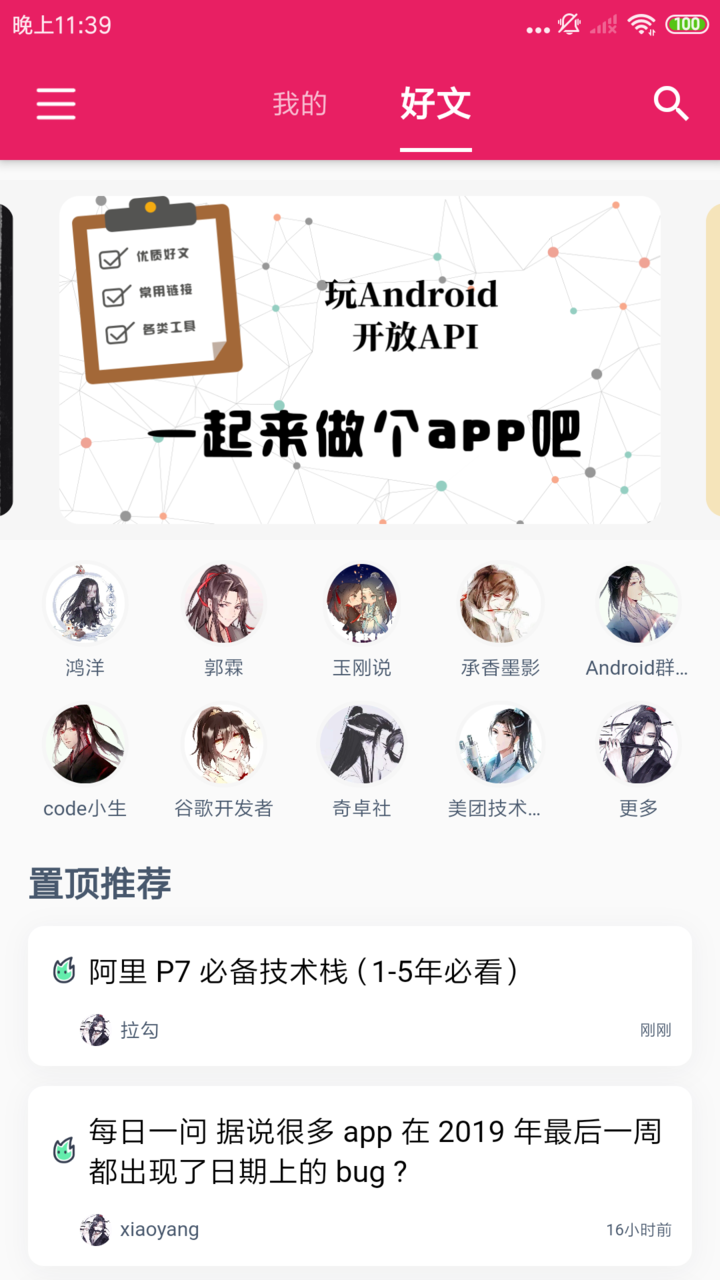
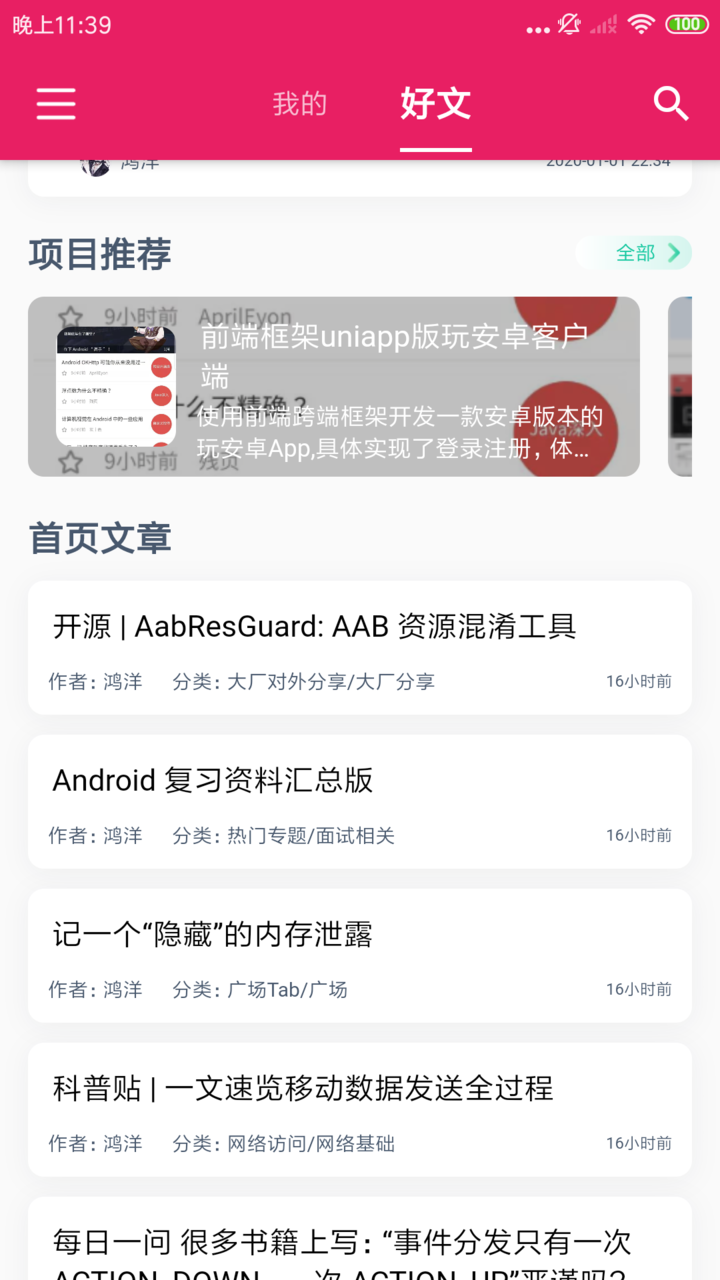
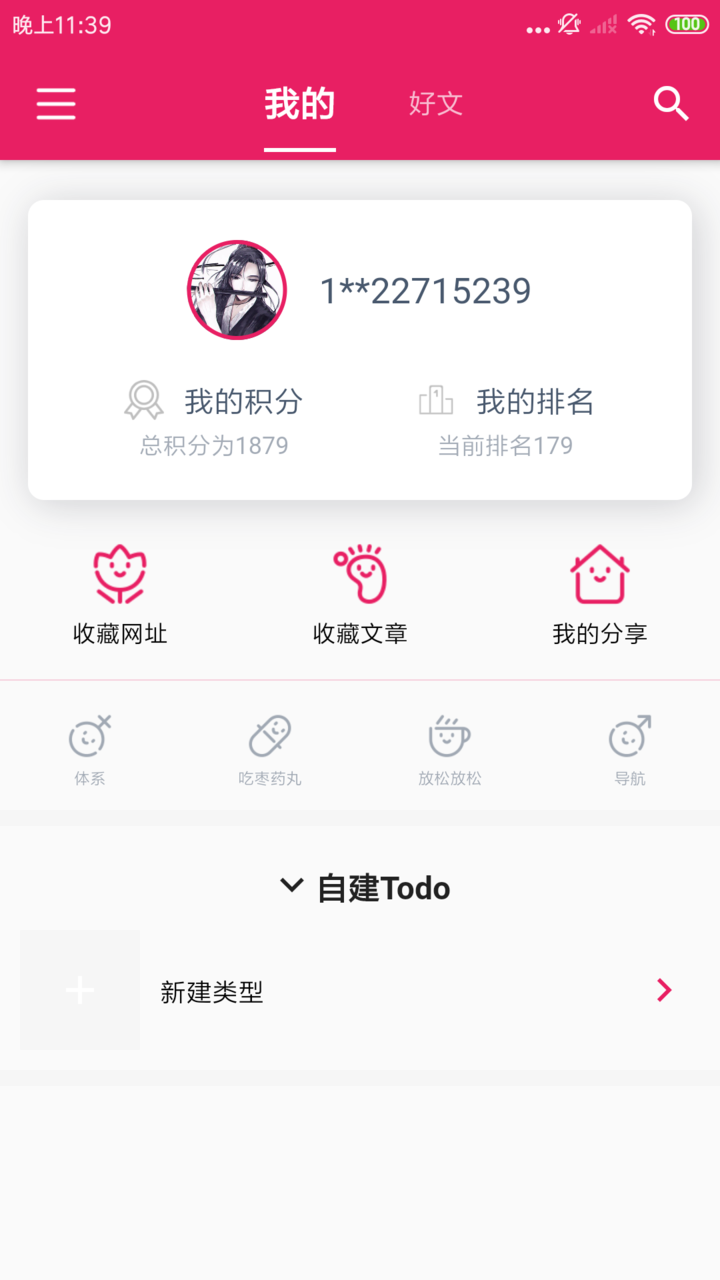
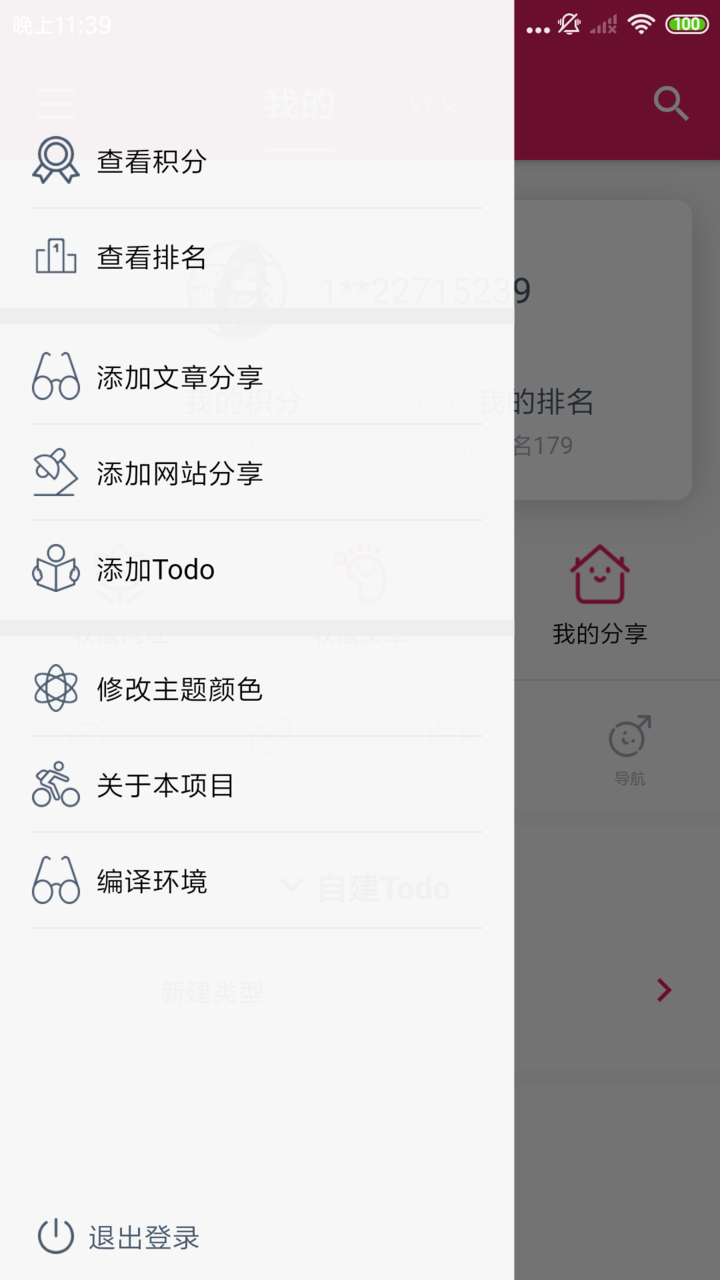
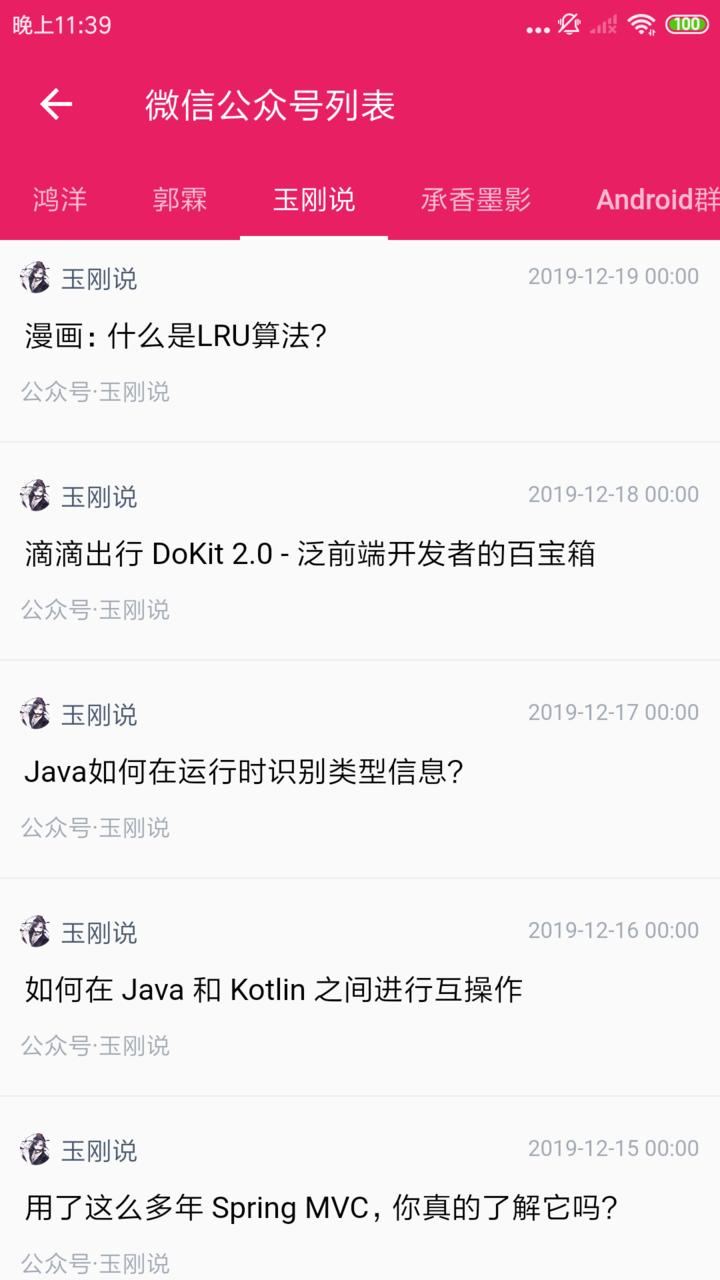
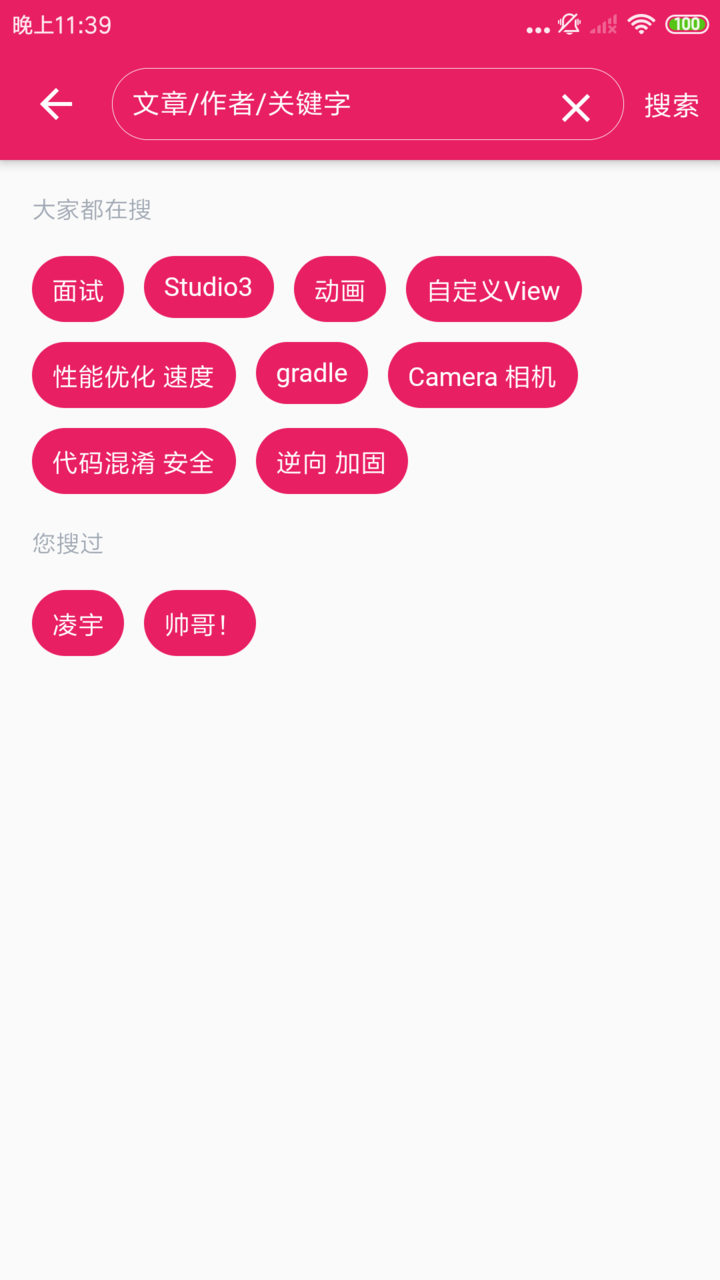
路由定义:
/// 创建应用的根 Widget
/// 1. 创建一个简单的路由,并注册页面
/// 2. 对所需的页面进行和 AppStore 的连接
/// 3. 对所需的页面进行 AOP 的增强
class AppRoute {
static AbstractRoutes _global;
static AbstractRoutes get global {
if (_global == null) {
_global = PageRoutes(
pages: <String, Page<Object, dynamic>>{
/// 闪屏页
'splash': SplashPage(),
/// 首页
'home': MainPage(),
/// 登录页面
'login': LoginPage(),
/// 注册页面
'register': RegisterPage(),
/// 首页的第二个tab
'second': SecondPage(),
/// 首页的第一个tab
'index': IndexPage(),
///项目目录
'project_list': ProjectListPage(),
/// 项目子目录
'project_child_list': ProjectChildPage(),
/// webView页面
'webView': WebLoadPage(),
/// 微信公众号列表页面
'wechat_author': AuthorPage(),
/// 微信公众号文章列表页面
'wechat_author_article': AuthorArticlePage(),
/// 用户积分
'user_point': UserPointPage(),
/// 用户排名
'user_rank': UserRankPage(),
/// 网址收藏
'web_collection': WebCollectionPage(),
///文章收藏
'article_collection': ArticleCollectionPage(),
/// 体系列表
'system': SystemPage(),
/// 体系列表下属文章
'system_child': SystemChildPage(),
/// 导航体系
'navi': NaviPage(),
/// 侧滑页面
'draw': DrawPage(),
/// 主题颜色修改
'theme_change': ThemeChangePage(),
/// 搜索页面
'search': SearchPage(),
},
visitor: (String path, Page<Object, dynamic> page) {
/// 只有特定的范围的 Page 才需要建立和 AppStore 的连接关系
/// 满足 Page<T> ,T 是 GlobalBaseState 的子类
if (page.isTypeof<GlobalBaseState>()) {
/// 建立 AppStore 驱动 PageStore 的单向数据连接
/// 1. 参数1 AppStore
/// 2. 参数2 当 AppStore.state 变化时, PageStore.state 该如何变化
page.connectExtraStore<GlobalState>(GlobalStore.store,
(Object pageState, GlobalState appState) {
final GlobalBaseState p = pageState;
// if (p.themeColor != appState.themeColor &&
// p.ifLogin != appState.ifLogin) {
if (pageState is Cloneable) {
print('修改--进行复制');
final Object copy = pageState.clone();
final GlobalBaseState newState = copy;
newState.themeColor = appState.themeColor;
newState.ifLogin = appState.ifLogin;
newState.screenH = appState.screenH;
newState.screenW = appState.screenW;
newState.userPoint = appState.userPoint;
return newState;
// }
}
return pageState;
});
}
/// AOP
/// 页面可以有一些私有的 AOP 的增强, 但往往会有一些 AOP 是整个应用下,所有页面都会有的。
/// 这些公共的通用 AOP ,通过遍历路由页面的形式统一加入。
page.enhancer.append(
/// View AOP
viewMiddleware: <ViewMiddleware<dynamic>>[
safetyView<dynamic>(),
],
/// Adapter AOP
adapterMiddleware: <AdapterMiddleware<dynamic>>[
safetyAdapter<dynamic>()
],
/// Effect AOP
effectMiddleware: <EffectMiddleware<dynamic>>[
_pageAnalyticsMiddleware<dynamic>(),
],
/// Store AOP
middleware: <Middleware<dynamic>>[
logMiddleware<dynamic>(tag: page.runtimeType.toString()),
],
);
},
);
}
return _global;
}
}
Widget createApp() {
final AbstractRoutes routes = AppRoute.global;
return MaterialApp(
title: '玩安卓',
debugShowCheckedModeBanner: false,
theme: ThemeData(
indicatorColor: ColorConf.ColorFFFFFF,
primarySwatch: ColorConf.themeColor,
),
home: routes.buildPage('splash', null),
onGenerateRoute: (RouteSettings settings) {
return MaterialPageRoute<Object>(builder: (BuildContext context) {
return routes.buildPage(settings.name, settings.arguments);
});
},
);
}
/// 简单的 Effect AOP
/// 只针对页面的生命周期进行打印
EffectMiddleware<T> _pageAnalyticsMiddleware<T>({String tag = 'redux'}) {
return (AbstractLogic<dynamic> logic, Store<T> store) {
return (Effect<dynamic> effect) {
return (Action action, Context<dynamic> ctx) {
if (logic is Page<dynamic, dynamic> && action.type is Lifecycle) {
print('${logic.runtimeType} ${action.type.toString()} ');
}
return effect?.call(action, ctx);
};
};
};
}
复制代码
首页
根据FishRedux的思想,我们把首页架构定义为: 一个大的page(MainPage),里面用pageView装载了两个大的page(SecondPage&IndexPage),
view
Widget buildView(MainState state, Dispatch dispatch, ViewService viewService) {
/// 渲染appBar
AppBar _renderAppBar() {
return AppBar(
backgroundColor: state.themeColor,
centerTitle: true,
titleSpacing: 60,
title: TabBar(
tabs: state.menuList
.map((e) => Tab(
text: e,
))
.toList(),
labelColor: Colors.white,
controller: state.tabControllerForMenu,
labelPadding: const EdgeInsets.all(0),
labelStyle: TextStyle(fontSize: 18, fontWeight: FontWeight.bold),
unselectedLabelStyle: TextStyle(fontSize: 14),
indicatorPadding: const EdgeInsets.all(0),
indicatorSize: TabBarIndicatorSize.label,
),
leading: Builder(builder: (ctx) {
return IconButton(
onPressed: () {
dispatch(MainActionCreator.onOpenDraw(ctx));
},
icon: Image.asset(
'images/icon_more.png',
color: Colors.white,
height: 24,
),
);
}),
actions: <Widget>[
IconButton(
onPressed: () {
dispatch(MainActionCreator.onToSearch());
},
icon: Icon(Icons.search),
)
],
);
}
return Scaffold(
primary: true,
appBar: _renderAppBar(),
body: TabBarView(
controller: state.tabControllerForMenu,
children: <Widget>[
KeepAliveWidget(AppRoute.global.buildPage('second', null)),
KeepAliveWidget(AppRoute.global.buildPage('index', null)),
],
),
drawer: AppRoute.global.buildPage('draw', null),
);
}
复制代码
and so on
好像也没有其他什么需要注意的了,只有一个难点是 TabController ,以及page页面需要如何 保活 :
定义自己的TabController
这个可以参考下之前的文章: 在fishRedux中使用TabController
页面保活
在普通的stf页面中,我们需要页面保持,只需要实现**AutomaticKeepAliveClientMixin **:
class _TestPageState extends State<testPage> with AutomaticKeepAliveClientMixin {
@override
Widget build(BuildContext context) {
/// 实现super方法
super.build(context);
return Container();
}
/// 返回true
@override
bool get wantKeepAlive => true;
}
复制代码
而在 fishRedux 中就比较麻烦,我们需要把这个page用keepWidget包裹起来:
import 'package:flutter/material.dart';
/// 保持状态的包裹类
class KeepAliveWidget extends StatefulWidget {
final Widget child;
const KeepAliveWidget(this.child);
@override
State<StatefulWidget> createState() => _KeepAliveState();
}
class _KeepAliveState extends State<KeepAliveWidget>
with AutomaticKeepAliveClientMixin {
@override
bool get wantKeepAlive => true;
@override
Widget build(BuildContext context) {
super.build(context);
return widget.child;
}
}
Widget keepAliveWrapper(Widget child) => KeepAliveWidget(child)
复制代码
Adapter写法
我们看下首页的布局,很明显由几个cell组成:
- banner
- 公众号分类gridView
- 置顶推荐
- 项目推荐
- 首页分章分页
如果在Android里面,那很明显就是一个RecyclerView+itemType组成; 如果是在Flutter原生里面,那很明显就是一个ListView+ItemBuilder里面按item划分 而我们在FishRedux里面,我们把页面做了一个拆分,页面是由一个SingleScrollView组成,而无论bannerComponent,classifyComponent,projectComponent,都是它的一个cell,而重头戏是articleComponent,它带有了父组件带来的loadMore和Refresh(其实整个页面都可以由一个ListView组成,当时不是很熟就用了上面的方法),我们来看看布局层级:
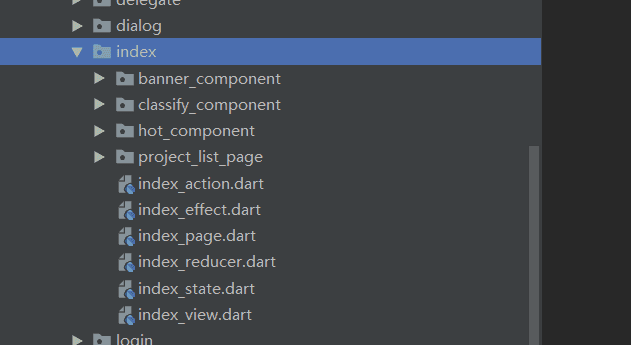
其中的Index_view为:
child: CustomScrollView(
slivers: <Widget>[
SliverToBoxAdapter(
child: viewService.buildComponent('banner'),
),
SliverToBoxAdapter(
child: viewService.buildComponent('classify'),
),
SliverToBoxAdapter(
child: viewService.buildComponent('hotArticle'),
),
],
),
复制代码
adapter
首页我们需要关注的是首页文章的 Adapter ,它隶属于 DynamicFlowAdapter ,其他的还有
- StaticFlowAdapter
- CustomAdapter
- DynamicFlowAdapter 我们看下首页的代码:
class ArticleAdapter extends DynamicFlowAdapter<HotArticleState> {
ArticleAdapter()
: super(
pool: <String, Component<Object>>{
"article_cell": ArticleCellComponent(),
"comm_article_cell": CommArticleCellComponent(),
"hot_project_cell": ProjectComponent(),
},
connector: _ArticleAdapterConnector(),
reducer: buildReducer(),
);
}
class _ArticleAdapterConnector extends ConnOp<HotArticleState, List<ItemBean>> {
@override
List<ItemBean> get(HotArticleState state) {
List<ItemBean> _tempList = [];
_tempList.addAll(state.hotArticleDataSource
.map((e) => ItemBean(
"article_cell", ArticleCellState()..hotArticleCellBean = e))
.toList());
_tempList.add(ItemBean(
"hot_project_cell",
ProjectState()
..projectListDataSource = state.projectDataSource
..screenW = state.size?.width
..screenH = state.size?.height));
_tempList.addAll(state.commArticleDataSource
.map((e) =>
ItemBean("comm_article_cell", CommArticleCellState()..cellBean = e))
.toList());
return _tempList;
}
@override
void set(HotArticleState state, List<ItemBean> items) {}
@override
subReducer(reducer) {
return super.subReducer(reducer);
}
}
复制代码
我们稍微分析下:
- 我们在 pool 中定义了component的路由
- 我们在_ArticleAdapterConnector的 get 方法中返回了一个ItemBean的List,其type为我们提前定义好的component,而data为各个component的state(各个component的state应该为page的子集)
- over
个人页面&登录页面
本来还想写写其他页面的代码的,但是其实都是个人主页页面的代码的拓展,说难点其实没有,唯一的尴尬点就是代码量爆炸,还有一点是一开始用fishRedux会忘记使用方法,比如:
- action怎么写?
- 在effect还是reducer里面写逻辑??
- 我的分页要怎么写比较好?
- 卧槽,我的tabController咋写
- ... 这里把我的葵花宝典奉上,我把下面这段文字写成了一个txt,放在桌面,忘记了就打开看看:
action 用来定义在这个页面中发生的动作,例如:登录,清理输入框,更换验证码框等。 同时可以通过payload参数传值,传递一些不能通过state传递的值。 effect 这个dart文件在fish_redux中是定义来处理副作用操作的,比如显示弹窗,网络请求,数据库查询等操作。 page 这个dart文件在用来在路由注册,同时完成注册effect,reducer,component,adapter的功能。 reducer 这个dart文件是用来更新View,即直接操作View状态。 state state用来定义页面中的数据,用来保存页面状态和数据。 view view很明显,就是flutter里面当中展示给用户看到的页面。 复制代码
- 本文标签: 总结 排名 ip IO 数据 tk list src 微信公众号 数据库 希望 CTO final 博客 tab ORM UI tag Select client 文章 tar MQ 代码 开发 删除 web bean map 葵花宝典 遍历 build 喝酒 AOP Menu 参数 http rmi Service 网站 bug Android dataSource 生命 https Collection IDE 2019 分页 DDL 目录 Action cat id App
- 版权声明: 本文为互联网转载文章,出处已在文章中说明(部分除外)。如果侵权,请联系本站长删除,谢谢。
- 本文海报: 生成海报一 生成海报二











![[HBLOG]公众号](https://www.liuhaihua.cn/img/qrcode_gzh.jpg)

